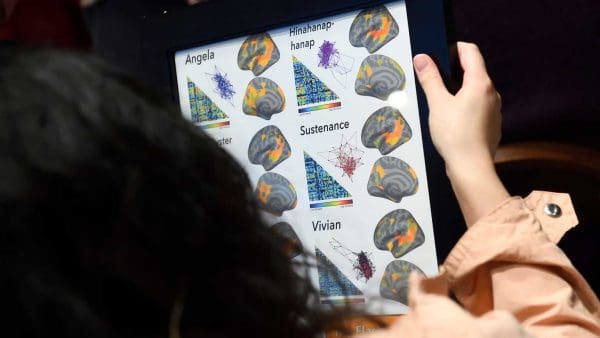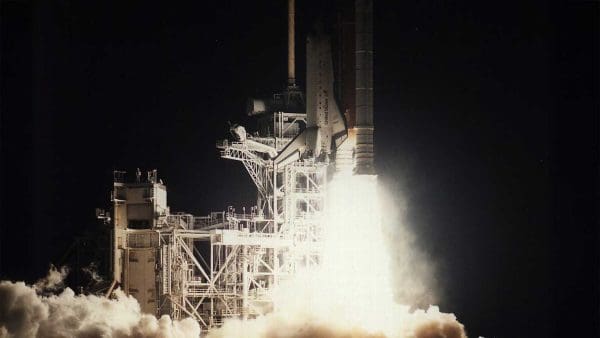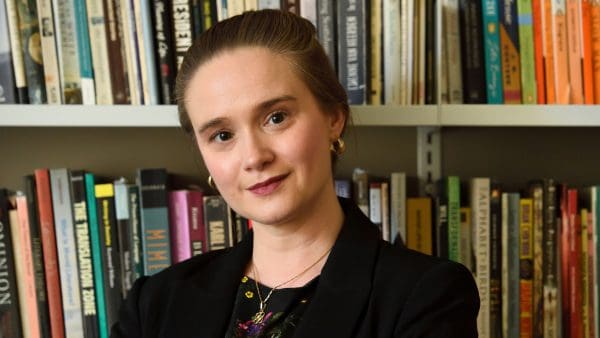
(c. 1510) in the Royal Library of Turin is widely, though not universally, accepted as a self-portrait of Leonardo da Vinci.
Art history professor Stephen J. Campbell has been teaching about Leonardo da Vinci for 20 years at the Krieger School of Arts and Sciences. Throughout his academic career, he’s seen interest in the Italian Renaissance artist and inventor explode with the growing value of Leonardo’s work at auction houses, the fervor created by Dan Brown’s The Da Vinci Code, and the boom in biographies that followed.
At the same time, Campbell has observed with some trepidation how biographers have increasingly veered from verifiable fact into presumption. Sometimes, transforming the historic figure into an almost fictitious one.
“With these invented Leonardos that have come down since the 1500s to the present time, writers liberally fill in the gaps with conjecture, and conjectures that build on conjecture,” says Campbell. The lack of historical rigor has troubled the historian, and he’s found it difficult to locate texts on Leonardo’s life suitable for sharing with his students.
Pop Culture Problem
That’s why he decided to write Da Vinci Worlds: Towards an Anti-biography of Leonardo. The book explores the different ways Leonardo has been handled in 21st-century popular culture. It looks at how biographers make speculative psychological leaps to make him fit the mold of a 21st-century “genius”—an outsider figure, a bit obsessive, a social non-conformist.
It is a problematic endeavor, says Campbell. As with most artists of the Renaissance, not much is known about the private life of Leonardo da Vinci, despite his numerous notebooks. “In them, Leonardo doesn’t tell us anything about himself. He doesn’t write about his own life,” says Campbell. “There’s very little biographical information. It doesn’t resolve into the holistic celebrity some of us want him to be.”

With these invented Leonardos that have come down since the 1500s to the present time, writers liberally fill in the gaps with conjecture, and conjectures that build on conjecture.”
—Stephen J. Campbell
Leonardo’s writings were a critical component of Campbell’s research process. He finds himself constantly reminded of their power for the reader. “Every time you return to them, it’s extraordinary in the sense that you get multiple voices and multiple selves talking to each other,” says Campbell. “Leonardo is an intersection of maker, problem solver, engineer, painter, and someone who lays claim to the role of philosopher. Many of his academic contemporaries would not have agreed with that description.”
That’s made more powerful because the texts were often written in the second person, as if speaking to the reader. Campbell thinks therein lies part of the reason many feel compelled to flesh out the missing details of his life. “People think something has been whispered to them, some kind of mystery has been divulged,” he says.
Ethics of the Past
Campbell says we tend to view Leonardo through a modern lens and risk turning him into something he’s not. “Our models of biography right now didn’t exist in Leonardo’s time,” he says. We invent “da Vincis” to fit the mold of contemporary celebrity—to be the equivalent of a tech visionary like Steve Jobs, to be an isolated and persecuted gay man, to suffer from attention deficit disorder, or to precociously be a vegan.
By highlighting these tendencies in his book—which is expected to go into production this fall—Campbell hopes readers will realize how Leonardo has been repurposed to fit current interests.
“There’s a whole ethics of approaching the past that I want people to confront while reading this book,” says Campbell. He also hopes his book serves as a caution to future biographers. “Be aware of when you are projecting and know how to signal that in your writing. Be very self-conscious about when you are doing that and why you need to do it.”




